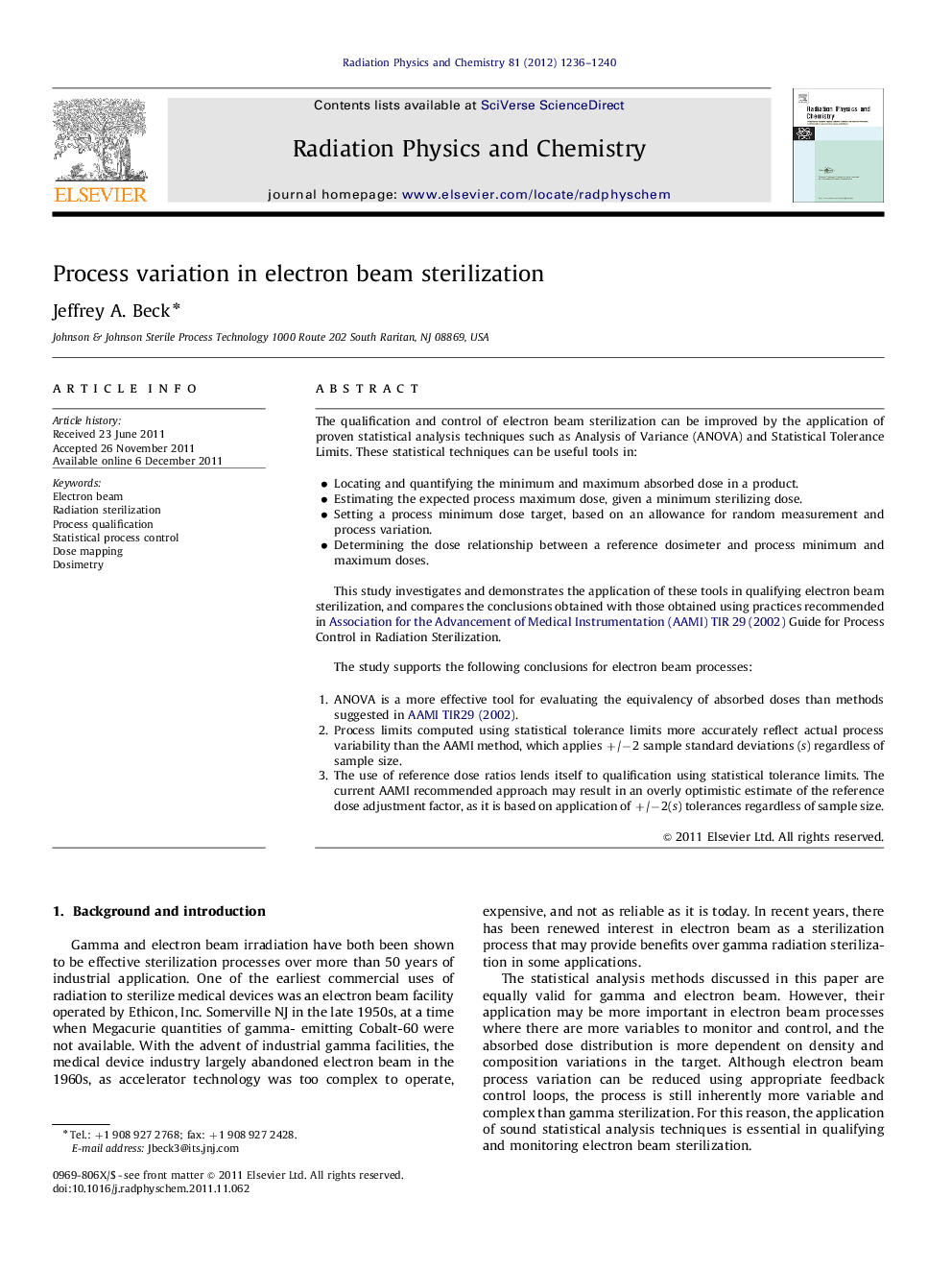| Article ID | Journal | Published Year | Pages | File Type |
|---|---|---|---|---|
| 1884006 | Radiation Physics and Chemistry | 2012 | 5 Pages |
Abstract
The qualification and control of electron beam sterilization can be improved by the application of proven statistical analysis techniques such as Analysis of Variance (ANOVA) and Statistical Tolerance Limits. These statistical techniques can be useful tools in:
- Locating and quantifying the minimum and maximum absorbed dose in a product.
- Estimating the expected process maximum dose, given a minimum sterilizing dose.
- Setting a process minimum dose target, based on an allowance for random measurement and process variation.
- Determining the dose relationship between a reference dosimeter and process minimum and maximum doses.This study investigates and demonstrates the application of these tools in qualifying electron beam sterilization, and compares the conclusions obtained with those obtained using practices recommended in Association for the Advancement of Medical Instrumentation (AAMI) TIR 29 (2002) Guide for Process Control in Radiation Sterilization.The study supports the following conclusions for electron beam processes:1.ANOVA is a more effective tool for evaluating the equivalency of absorbed doses than methods suggested in AAMI TIR29 (2002).2.Process limits computed using statistical tolerance limits more accurately reflect actual process variability than the AAMI method, which applies +/â2 sample standard deviations (s) regardless of sample size.3.The use of reference dose ratios lends itself to qualification using statistical tolerance limits. The current AAMI recommended approach may result in an overly optimistic estimate of the reference dose adjustment factor, as it is based on application of +/â2(s) tolerances regardless of sample size.
- Locating and quantifying the minimum and maximum absorbed dose in a product.
- Estimating the expected process maximum dose, given a minimum sterilizing dose.
- Setting a process minimum dose target, based on an allowance for random measurement and process variation.
- Determining the dose relationship between a reference dosimeter and process minimum and maximum doses.This study investigates and demonstrates the application of these tools in qualifying electron beam sterilization, and compares the conclusions obtained with those obtained using practices recommended in Association for the Advancement of Medical Instrumentation (AAMI) TIR 29 (2002) Guide for Process Control in Radiation Sterilization.The study supports the following conclusions for electron beam processes:1.ANOVA is a more effective tool for evaluating the equivalency of absorbed doses than methods suggested in AAMI TIR29 (2002).2.Process limits computed using statistical tolerance limits more accurately reflect actual process variability than the AAMI method, which applies +/â2 sample standard deviations (s) regardless of sample size.3.The use of reference dose ratios lends itself to qualification using statistical tolerance limits. The current AAMI recommended approach may result in an overly optimistic estimate of the reference dose adjustment factor, as it is based on application of +/â2(s) tolerances regardless of sample size.
Related Topics
Physical Sciences and Engineering
Physics and Astronomy
Radiation
Authors
Jeffrey A. Beck,
